Howdy friends! Every Monday for the month of December, I’ll be combing through this year’s archive of posts and highlighting some of my favorites.
I’m doing this for two reasons. #1) Many have subscribed in the last couple months that may not have seen these posts, and #2) I need a break! I’ve been writing 2-3 posts a week for eight months in a row. Your boy is tired! Thus, I’m taking a month off to prepare for 2025.
For those who have been around since the beginning of this Substack (back when it was known as Retro Gaming Archive), thank you for reading, commenting, and supporting. For those who’ve chosen to support this Substack financially, I’m so grateful for your kindness and generosity.
Thanks for understanding while I prepare something awesome - a Brave New World, perhaps - for 2025!
Sonoran Videogame Society is a Substack dedicated to playing and exploring video games with friends like you. Some posts are free, some are for paid subscribers only. Don’t forget to sign up here. Thanks for reading!
Ah yes, the “listicle.” You know the kind!
“Top 10 Reasons to Shave Your Nosehair!”
“Mulder and Scully’s Best Arguments, Ranked!”
That sort of AI-generated crap that most people despise, but click on anyway because they can’t help it.
But I’m not talking about “The 8 Lego Sets You Can’t Afford!” today, oh no. Today, I’m ranking all the Nintendo consoles - the NES, SNES, N64, Gamecube, Wii, Wii U, and the Switch – from worst to best. The handhelds will get their own separate “worst to best” list at a future date, because this console list was hard enough.
Nintendo is special. Not just because they make great games and unique hardware, but because their consoles are often a person’s first experience with video games. How many millions of kids were delighted by a Mario or Zelda game growing up? Or these days, Animal Crossing or Splatoon? Nintendo properties do a fantastic job at captivating the imagination and stirring the spirit, particularly in children. To the point where even if people start gaming on Playstation, Xbox, or PC, Nintendo will always hold a warm, nostalgic place in their heart.
I grew up with all of Nintendo’s consoles, even the ones that disappointed me. My first was the NES back in 1989, followed by the SNES in 1992. If I wasn’t gifted them for Christmas, I purchased them with my own money later in life. Out of all the main console manufacturers in my lifetime – Sega, Sony, and Microsoft – Nintendo has had the most lasting impact.
The parameters for this list are simple. Did I enjoy the console growing up? Do I enjoy the console now? Do I think the console will stand the test of time? In other words, this is a completely subjective list, as it should be. I’ll list the sales numbers and the amount of games produced for the console in its lifetime, but these stats will have no bearing on each individual console’s ranking.
I should note that I don’t hate any of these consoles, even my least favorite. Every Nintendo system has its fair share of solid games, and if I wanted to play a specific title that’s tied to a respective system, I would absolutely boot it up today. But to paraphrase Morrissey, some consoles are better than others. Otherwise, man would not need to rank them in a list such as this.
Alright, I think that covers everything. Now, are you ready to disagree? Let’s do this!
#7 – NINTENDO 64
FIRST RELEASED: September 29th, 1996 (US)
SALES: 32.93 million worldwide
GAMES: approx. 388
Somewhere, off in the distance, Generation-Z rips their clothes and throws ashes in the air.
I know for many late twenty/early thirty-somethings, the Nintendo 64 was their console. And I get it. Super Mario 64. Blast Corps. Goldeneye 007. The Legend of Zelda: Ocarina of Time. Banjo-Kazooie. Donkey Kong 64. Paper Mario. Not all of these games, particularly the Rare platformers, are my cup of tea, but I can’t deny their impact.
The problem for my demographic, the older Millennials, is that we grew up with the NES and the SNES. The NES made console gaming great again, and the SNES bombarded humanity with a seemingly never-ending stream of classics. In 1996, with two outstanding successes under their belt, many of us thought Nintendo could do no wrong.
For a time, we were correct. Super Mario 64 absolutely revolutionized the industry, and its influence can’t be understated. Not many games can sustain a system singlehandedly, but Mario 64 did just that for a time. But after several months of being on the market, Mario 64 was still the best the Nintendo 64 had to offer, outside of some mediocre third-party titles and the “ok, I guess” Pilotwings 64. Indeed, as the glow of Mario 64’s light waned in the first half of 1997, it became clear that all was not well with Nintendo’s third console.
Throughout the Nintendo 64’s lifespan, noteworthy game releases emerged in a slow trickle, both third and first-party. Third-parties were not happy with Nintendo’s decision to use expensive cartridges as their proprietary format, and Nintendo themselves struggled to make 3D games in-house. Entire genres, like the RPG and survival horror, were all but absent on the N64 (Quest 64 and Resident Evil 2 barely count). Family-friendly 3D platformers abounded, and while some of Rare’s titles in this field were technically excellent, the bulk just felt like expanded iterations of Mario 64. (That said, Rare is absolutely the savior of the Nintendo 64. Without their work, the console wouldn’t be nearly as well-remembered today as it is.)
During this time, money was limited in our household, so I never owned a ton of N64 titles. I gorged on what I could: Super Mario 64, Killer Instinct Gold, Starfox 64, Diddy Kong Racing, Ocarina of Time, and Harvest Moon 64. I played through the entirety of Banjo Kazooie, not because I liked it, but because I asked for it for Christmas; by the time I realized the game was disappointing, I figured I should at least finish it. Majora’s Mask was another Christmas gift that, while appreciated, I didn’t enjoy until years later.
I rented games from Blockbuster a lot during this time, and unfortunately, most N64 games were proper pants. Cruisin USA, Clay Fighter 63 1/3, Turok: Dinosaur Hunter, Duke Nukem 64, etc. I read game magazines, I knew these games didn’t get the best scores, but friends, I can’t stress this enough: outside of Nintendo and Rare’s titles, there just wasn’t much to play, so I rented and played whatever I could. Even games that EGM and GamePro liked at the time, like Mario Kart 64 and 1080 Snowboarding, I couldn’t get into. And for some reason, I never owned Goldeneye 007, so I rented that about a dozen times.
Meanwhile, the Playstation was overwhelmed with amazing Capcom, Konami, Square, and Sony-developed titles. Big, beefy, mature games, several discs long, full of amazing cutscenes and CD-quality audio soundtracks. To me at the time, Playstation looked more and more like gaming’s future, while Nintendo seemed stuck in the past.
By the time early 2001 rolled around and the N64 was winding down, the beleaguered console was long in the tooth. The Dreamcast and PS2 were out, 3D games were looking better and better, and outside of Perfect Dark and Paper Mario, the N64 had little to offer.
I can’t stress how disappointed I was in the N64 as a kid. The console should have been a sure thing. Until the late 90s, Nintendo consoles always had the best exclusive games, the sharpest graphics and sound, the most variety, etc. Whether due to hubris or just severely underestimating the strength of their main competitor, Nintendo absolutely dropped the ball here. My least favorite Nintendo system by a wide margin.
#6: WII
FIRST RELEASED: November 19th, 2006 (US)
SALES: 101.63 million (worldwide)
GAMES: approx. 1,638 games released physically, 430 games released for Wii Ware, and between 659-800 Virtual Console games. For an approx. total of 2700 games, give or take.
By some miracle, I got the Wii on launch day. Not because I camped out for days prior, not because I knew the specific store that had lots of stock. No, my roommate that morning had convinced me we should go find one. I thought he was nuts, but I liked his moxie, so off we went.
Our nearby Target was a bust. The employees were kind enough to tell us that the head count in the line wrapped around their building exceeded their stock, so we didn’t even bother waiting.
We drove to Best Buy. Another huge line. This time, though, no one seemed to know how many Wiis were here. We got in line, and within thirty minutes of waiting, an employee announced that they would be handing out tickets in order of arrival. Whoever received a ticket would be able to purchase a Wii.
Sonoran Videogame Society is a reader-supported publication. To receive new posts and support my work, consider becoming a free or paid subscriber.
The employee kept moving towards us, handing out tickets. I expected them to run out a few people ahead of us, so we could go home. But it didn’t happen. We got the second to last ticket, and not long after, walked away with a Wii, an extra Wiimote with nunchuk, and The Legend of Zelda: Twilight Princess. I couldn’t believe it. Thanks to my roommate and his supreme convincing skills, we now had the new Nintendo console.
Once we got home, we called all our friends over, created countless, ridiculous Miis, and played Wii Sports all day long. Between waiting in line, the sheer luck of getting a Wii, and the many hours of in-person hilarious multiplayer, November 19th, 2006 remains one of my favorite gaming memories.
And, for about 18 months, the Wii was my favorite Nintendo console. Twilight Princess. Wii Sports. Trauma Center: Second Opinion. Super Paper Mario. Resident Evil 4: Wii Edition. Big Brain Academy: Wii Degree. Mario Strikers Charged. Super Mario Galaxy. Metroid Prime 3: Corruption. Boom Blox. No complaints here.
The Wii was nearly impossible to find for about three years after its release, which made playing these games all the sweeter. Due to the console’s accessibility and ease of play, the Wii became a cultural phenomenon that captivated gamers and casuals alike.
Something happened with Smash Bros. Brawl, however. While I applauded the game’s scope, cast of characters, and general mayhem, the game just wasn’t that good. The Wiimote/nunchuk controller combination was particularly awful for a fighting game that required precise controls. Thankfully, you could connect Gamecube controllers and play that way, but even then, the game felt too floaty and slow compared to Smash Bros. Melee’s insane kinetic energy.
After the Brawl disappointment, the Wii fell off hard for me. The system continued to sell gangbusters for the next couple years, but few games came out that were worth playing. In fact, the console was known mostly for its shovelware, or as we call them today, mobile games. Even the Nintendo-developed titles, the usual saviors of any Nintendo console, were lackluster. Mario Kart Wii, New Super Mario Bros. Wii, and Skyward Sword in particular are shockingly dull, especially given the pedigree of those respective franchises. Super Mario Galaxy 2, Donkey Kong Country Returns, Kirby’s Return to Dreamland, and Fortune Street were four shining outliers at the end of the Wii’s lifespan, but otherwise, I was disappointed with what the console had to offer post-2008.
“But Dylan, what about Virtual Console?” Yeah, I’ll admit, Virtual Console was a cool idea and somewhat ahead of its time. The limited money I threw around for videogames in the Wii-era primarily went to new titles, though, not ones I either already owned or had no interest in playing. When your gaming budget is tight and you really want to play Super Mario Galaxy, decisions must be made.
The Wii is particularly hard to return to today. The Wiimote/nunchuk combination which felt so intuitive and unique in 2006 absolutely grates my nerves in 2024. Needing AA batteries just to use the required controller feels so antiquated and annoying now, as does any game that requires waggling or pointing directly at the screen. As with any Nintendo console, I am absolutely grateful for the memories the system provided, either by myself or with others. But the Wii is up there with the N64 as the Nintendo console I play the least.
#5 – SWITCH
FIRST RELEASED: March 3rd, 2017 (Worldwide)
SALES: 139.36 million consoles shipped as of December 2023
GAMES: no definitive number, but between physically released titles and eShop exclusives, upwards of 5,000 games
I promise, I’m not trying to be a contrarian. Few self-respecting Nintendo fans, myself included, aren’t grateful for the Switch. The console was an absolute Hail Mary play, one that, if it failed, might have been the end of Nintendo’s hardware business altogether after the underperforming Wii U. And yet, against all odds, it’s their best-selling console - and nearly their best-selling handheld as well, next to the Nintendo DS’ 154 million units. And all because of the system’s brilliant ability to play console-quality games on the go or at home with the dock.
I don’t have any problem whatsoever with the Switch. It has an overwhelmingly great library of games from both Nintendo and third-parties. Many of Nintendo’s best series have been well-represented here, including the underappreciated Metroid and Pikmin. Depending on who you ask, Mario and Zelda got their best titles with Super Mario Odyssey and Breath of the Wild. And if you didn’t buy a Wii U, the Switch received nearly all of its predecessor’s best games, save for a couple that relied too heavily on the tablet controller.
But here’s the thing… the Switch wasn’t made for me, a guy in his late thirties who still happens to love Nintendo. This is not a bad thing, by any means. I just have no emotional attachment to it whatsoever. It’s a piece of hardware that happens to run a bunch of great Nintendo games, nothing more. And while I feel like that should count for more than it does in my mind, it just doesn’t.
The lifeless interface, the laggy eShop, the backwards voice chat options, and the Joy-Con drift are all real problems with the Switch that I hope get addressed in Nintendo’s next console. But none of these issues affect how I feel about the Switch at this present moment.
I’m so glad the Switch exists. I’m so glad it got Nintendo out of their rut and made them and their properties relevant to a whole new generation. But when I reflect on what the console means to me, all I’m left with are some games, its revelatory gimmick and its absurdly high sales numbers. Plenty of evidence to consider the Switch an excellent console in its own right, but not one that touches me as deeply as the next four.
#4: WII U
FIRST RELEASED: Nov. 18th, 2012 (US)
SALES: 13.56 million
GAMES: 792
I love underdogs, which means I love the Wii U. I love its ridiculous tablet controller, I love its stupid name that confused the hell out of the general populace, and I love that only 13 million people bought one.
Now, I acknowledge that the Wii U wasn’t a great system. It was poorly executed, terribly marketed, and almost solely supported by Nintendo after its first year. But dang, did I love this bulky, awkward mess.
The Gamepad remains one of my favorite controllers ever. Not only does it just feel good in your hands, the tablet screen, when used properly, was amazing. Making levels with Super Mario Maker worked perfectly. The world map in Xenoblade Chronicles X is surprisingly detailed and well-considered. And I think I’m one of the few weirdos who preferred using the Gamepad in Pikmin 3 over the Wiimote/nunchuk combination. Few games made good use of the tablet screen, but I was always impressed by those who succeeded. Also, at the time, playing games solely on the tablet while your wife watches “Monk” or whatever was pretty nifty.
The good game list is shockingly small, even smaller than the N64’s. New Super Mario Bros. U. Nintendo Land, Pikmin 3, NES Remix 1+2, Donkey Kong Country: Tropical Freeze, Hyrule Warriors, Captain Toad: Treasure Tracker, Xenoblade Chronicles X, Yoshi’s Wooly World, Mario Kart 8, Wind Waker HD, Twilight Princess HD, Breath of the Wild, and Super Mario 3D World are all top-tier. Splatoon, Paper Mario: Color Splash, and Super Smash Bros. Wii U are all pretty solid as well.
So if I acknowledge that good games are few and far between, why is the Wii U ranked so high? Some of the Wii U’s games absolutely floored me. I sank 100+ hours into Hyrule Warriors, Xenoblade Chronicles X, and Breath of the Wild, and dozens more into Mario Kart 8, the Zelda HD remasters, and Super Mario 3D World among others. Excellent games holding my interest for long spans of time combined with a quirky system that few seemed to appreciate at the time, propel the Wii U’s standing in my eyes.
I also appreciated the Miiverse, Nintendo’s bizarre online network that essentially gave each new game its own community. People could write notes to others and draw non-crude, but still freakishly rendered iterations of Nintendo characters to their heart’s content. Miiverse felt like Nintendo finally taking a step into online community, so it’s a shame that they failed to improve on its solid foundation for the Switch.
Even though the Wii U is absolutely the precursor to the Switch, it is, to me, the last Nintendo system that feels like it had its own personality. Like an awkward teenager who has a lot of endearing traits, but just needs a bit of confidence and encouragement. Players were few, games were fewer, but the memories are forever.
*images courtesy of Nintendo and GameStop
#3: NES
FIRST RELEASED: Oct. 18th, 1985 (New York), Feb. 1986 (Los Angeles), Sept. 27th 1986 (rest of US)
SALES: 61.91 million
GAMES: 1,387, including Famicom and Europe-only titles
They say you never forget your first, and I suppose that’s true.
When my dad brought home the Nintendo Action Set that included two controllers, the Zapper, and the Super Mario Bros. / Duck Hunt combo cart, I didn’t know that this was the console and game that saved the video game industry. I wasn’t aware that the NES had dozens of landmark titles or that entire genres were being pioneered on the console. All I knew was that Super Mario Bros. ruled. When Mario jumped, I jumped. When he died, I died a little inside. Getting to Bowser felt like an event… until I realized Princess Toadstool was in another castle. That was it, I was hooked, like millions of other kids my age. For a time, Nintendo was gaming, thanks to the NES.
While I grew up with the NES and enjoyed the SMB trilogy extensively, I never owned many games. But I rented a ton of titles, and particularly fell in love with the Teenage Mutant Ninja Turtles trilogy and any Mega Man game I could get my hands on (usually 2, 3, 4, and 5 – 1 and 6 were always difficult to find).
My cousin also had an NES and his library was slightly more extensive than mine. Ninja Gaiden II, Paperboy, Wheel of Fortune: Junior Edition (surprisingly fun, this one), and the bootleg to end all bootlegs, 42-in-1. Yes, the latter actually had 42 games on it, and yes, it worked like a Swiss watch; still does today, in fact. 42-in-1 compiles mostly older titles, like Pinball, Tennis, Donkey Kong 3, etc, but it also contains an array of Famicom-only games that are fantastic. Games like TwinBee, B-Wings, Antarctic Adventure, Battle City, and Front Line, bizarre Japanese relics that deserve a wider audience, even today.
Sonoran Videogame Society is a reader-supported publication. To receive new posts and support my work, consider becoming a free or paid subscriber.
Fourteen years ago, I started a NES blog called “The Quest to Review Every NES Game.” The quest took a little over three years to complete, but I eventually reviewed all 754 NES games. The reviews are still up now, so if you’re inclined, check them out on Questicle.net.
During this quest, however, I discovered a shocking secret. One that really irritated a lot of NES fans out there, but that I, after playing every NES game, could not deny. The NES has a lot of crap games. Like… a lot. I’d say about 1/3 of the library is great-to-good, 1/3 is mediocre, and 1/3 is complete rubbish. That’s a little over 500 games that you’re probably not going to want to play, ever. And your disposition towards the 250-ish games that are left will depend on your affinity for dated game mechanics. My brother-in-law, who’s slightly older than I am, can’t play NES games anymore for this very reason, and I understand that.
Personally, I still love many cherished titles like Contra, Ninja Gaiden II, and even the original Super Mario Bros., but I find Legend of Zelda and Metroid difficult to return to today. Not unplayable, mind you, and I appreciate that they pushed the exploratory action-adventure genre forward. Still, future iterations of each franchise are, for the most part, more polished and interesting than their inaugural entries.
The latter is an example of why the NES isn’t higher on this list. It’s a fantastic console and a pioneer. Without its unbelievable success, we wouldn’t have, well, every other console that came after it here in the States. But it’s also nearly forty-years-old. While some of the games remain excellent to this day, a good portion are absolutely feeling middle age.
#2: GAMECUBE
FIRST RELEASED: Nov. 18th, 2001
SALES: 21.74 million
GAMES: 651
As evidenced by my undying affection for the Wii U, I love when Nintendo gets odd. Especially when it looks like they’re also trying to appeal more to the mainstream. The Gamecube has incredible graphics, arguably some of the best of the sixth generation, which includes PS2, Xbox, and Dreamcast. The console also, finally, embraced optical disc technology, which meant games were much cheaper than N64 titles.
With these two consumer wins, however, come a host of caveats. The discs are tiny, which gives them personality, but was mostly done to prevent copyright infringement and to avoid paying licensing fees to the DVD Forum (both the PS2 and Xbox used DVD discs as their proprietary format). As such, Gamecube does not offer the ability to play DVDs, which both the PS2 and Xbox provide. The Gamecube itself is essentially a small purple cube, and arguably, to quote a young Elijah Wood, looks like a baby’s toy; it has a carry handle, for crying out loud.
The games are eclectic and weird, much more so than any previous Nintendo console before or since. Luigi’s Mansion was a launch title. The divisive Super Mario Sunshine and Legend of Zelda: Wind Waker were the flagship Mario and Zelda titles on the console. Sega, now a third-party developer for the first time, loaded up the Gamecube with exclusive Sonic Adventure ports, Billy Hatcher and the Giant Egg, and Skies of Arcadia Legends. Other random exclusives like Animal Crossing, Cubivore, and Chibi Robo are wonderful Japanese oddities. Donkey Konga 1 + 2, Metal Gear Solid: The Twin Snakes, P.N. 03, Viewtiful Joe, Odama, all the Mario Parties, but especially that one with the microphone, I could go on and on. Every Resident Evil title saw a release on Gamecube, with three – the Resident Evil remake, Resident Evil Zero, and Resident Evil 4 – exclusive to the console for a time.
I know I’ve mentioned some popular titles already, but some of these, like Luigi’s Mansion, sold well because it was a launch title, not because people necessarily wanted it. The game got decent scores at launch, but many critics (and players, no doubt) wondered why the system didn’t launch with a Mario game. No one could have predicted that Luigi’s Mansion would become a beloved franchise. Ditto Animal Crossing, which didn’t really pick up steam until the Wii and DS versions. Wind Waker is now considered a beloved entry in the Zelda franchise, but its existence was a dramatic point of contention before and after its release.
Metroid Prime, Paper Mario: The Thousand Year Door, Resident Evil 4, Mario Kart: Double Dash, and Super Smash Bros. Melee are about the only games people can agree on for the Gamecube. The rest are up for debate.
Just writing all of this reminds me how unbelievably brilliant the Gamecube was at the time. Poor Nintendo, they had no idea what an early 2000s mainstream audience wanted, but they were absolutely catering to me, a guy who loved as much Japanese strangeness in his games as he could get. The controller might be my favorite Nintendo controller to this day, it is so comfortable and ergonomic, and all the big, pillowy words people use to describe a well-made controller. Get rid of that worthless little D-pad, and it’s a 10/10 here.
I know the Gamecube’s failure is responsible for the Wii, and that makes me sad. With Gamecube, Nintendo got too insular, and according to them, too focused on the “hardcore” gamer, so they pivoted towards a more casual audience for the Wii. From a business perspective, this makes all the sense, but at what cost? The casual audience didn’t follow them to the Wii U, they jumped ship for mobile games.
I suppose Nintendo’s story has a happy ending, though, at least for now. After several years of costly trial-and-error with the Wii U, Nintendo finally found a profitable medium with the Switch, a console that caters to casuals and die-hards alike with a wide range of titles.
Nintendo will never be as weird as they were with the Gamecube again. Not just the console’s strange design, but the risks they were willing to take. For as much as I love some of Nintendo’s modern titles, a lot of them feel very safe, polished to a cautious sheen. You can’t really say that about the Gamecube’s look or library. It feels designed to make the average gamer uncomfortable in the most precious way possible.
#1: SNES
FIRST RELEASED: Aug. 23, 1991
SALES: 49 million
GAMES: 1,746
When all the SSD drives and microtransactions have been dumped unceremoniously into the Matrix’s garbage pile of irrelevance, the SNES will still be there. You will slam an F-Zero cartridge into its top-loader and it will turn on every time, because it is faithful and true to its purpose. It knows you’ll come back to it, as well. How could you leave? The SNES has it all.
Remember when you saw Mario fly with his yellow cape in Super Mario World? No more pretend flying with the raccoon tail! With the cape, you could soar all the way across the outdoor levels. And there was a world map! Hidden exits and secret levels and riding Yoshi and a very intimidating Bowser castle and a place called Chocolate Island where every kid wanted to go and live forever.
The very best SNES games aren’t just considered the best on the console. They’re considered to be some of the greatest of all time. Super Mario World 2: Yoshi’s Island is a perfect 2D platformer that’s rarely been equaled. Super Metroid is still one of the best entries in the adventure franchise 30 years later. Few RPGs rival Chrono Trigger or Earthbound for sheer creativity and innovation. And Turtles in Time is still one of the most enjoyable co-op beat-em-ups ever created. So many developers were firing on all cylinders with the SNES.
The SNES feels like it’s ancient, eternal, like a friend that’s always been there and always will be, yet you’re not sure where it came from or where it’s going. Like every console, it has its fair share of underwhelming games, and yet, just playing the SNES itself, regardless of the game, is a joy. The console represents wonder, your childhood imaginations catching up to realms of possibility. The best game developers understood that they could create full-on worlds on this thing, not just snapshots. The SNES feels eternal because these developers – many of them Japanese and exceedingly brilliant – aimed for eternity. Link to the Past needs to sell, sure, but if the game doesn’t take root in your soul and plant a garden, what’s the point?
Many millions before me have gushed about the SNES’ greatness. I could go onabout any number of titles I haven’t already mentioned. Titles like Super Castlevania IV, Street Fighter II Turbo, the Donkey Kong Country trilogy, ActRaiser, Super Mario Kart, King of the Monsters, Final Fight II, the Super Star Wars trilogy, and on and on. These games are probably some of your favorites, and you probably have some of your own that I didn’t mention. Better do it now in the comments, or I won’t know what you love and that’d be a shame.
Do kids today need to play old games? We’re all kids, and SNES games aren’t old, they’re everlasting. Kids need to learn history, they need to know where they came from, where they’re going, what’s possible.
Maybe it’s been awhile since you’ve given your old pal, the Super Nintendo Entertainment System a visit. Maybe you feel like that part of you that played those games is in the past, and they’re never coming back, so why dredge up old memories? You’re too focused on being a responsible person, earning a living, taking care of your family. Fun is for kids who don’t know any better. That’s the hurt talking, the imposter, the voice you’ve settled for. You dwell in a ball of internal misery and anxiety constantly, not even the SNES and its powers can heal you now. Maybe so… maybe so. But perhaps, a perspective change is in order. To get out of your current self, you must return to where you came from. Start again. Change your mind. Play your favorite SNES game, embrace all the mixed emotions of life, and remember when all was well. Perhaps, someday, with enough time and effort, all can be well again.
*Switch wallpaper courtesy of Reddit user eaw213 and image courtesy of IGN
How about you? What’s your least favorite Nintendo console? Or how about your favorite, and why is it the SNES? Leave your thoughts in the comments below.






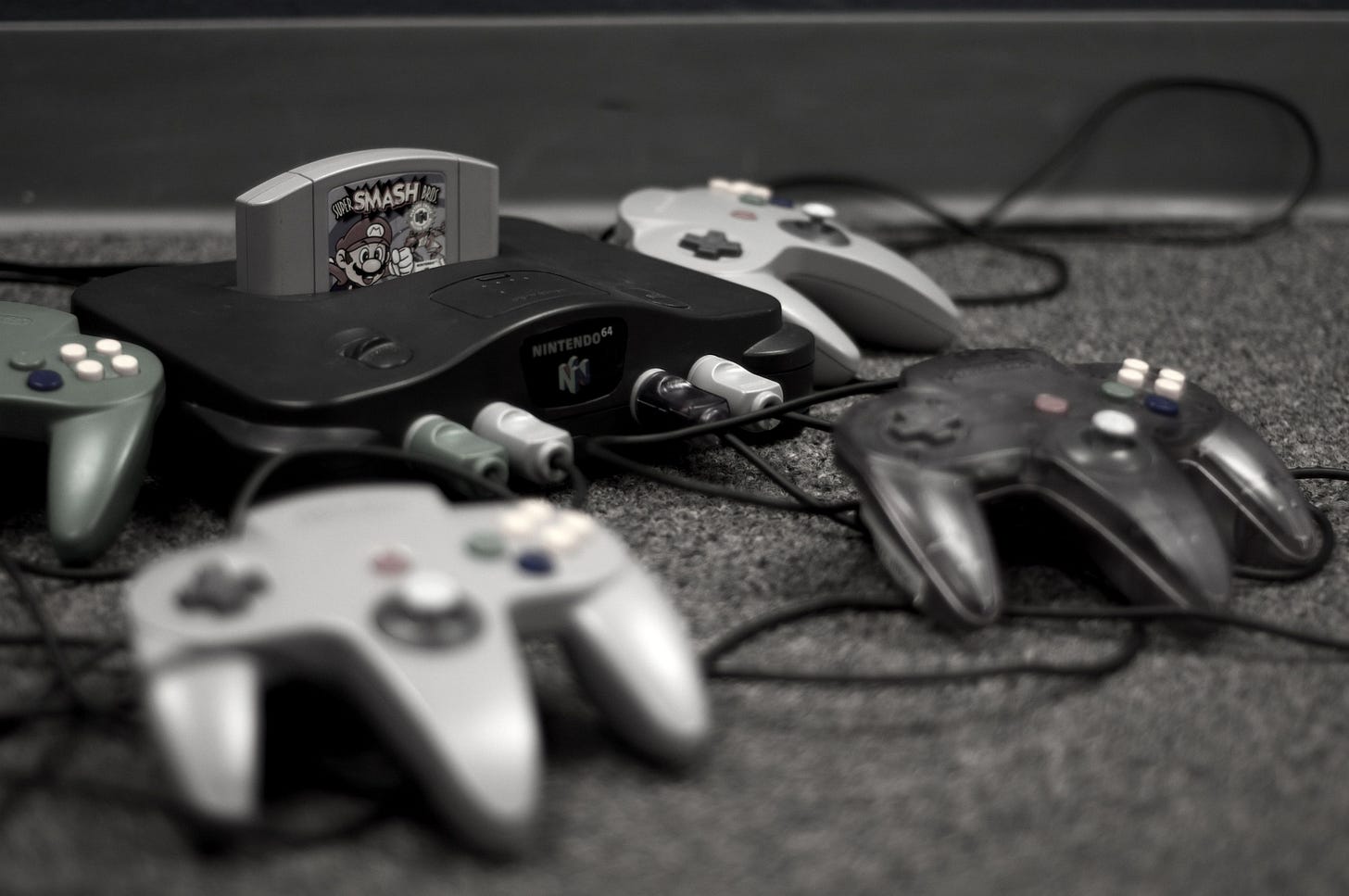
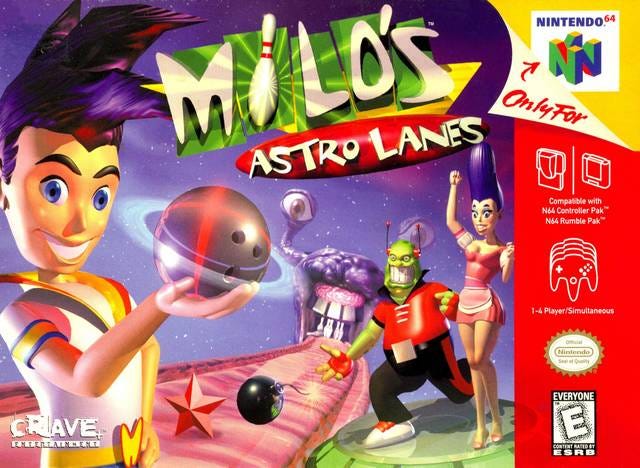
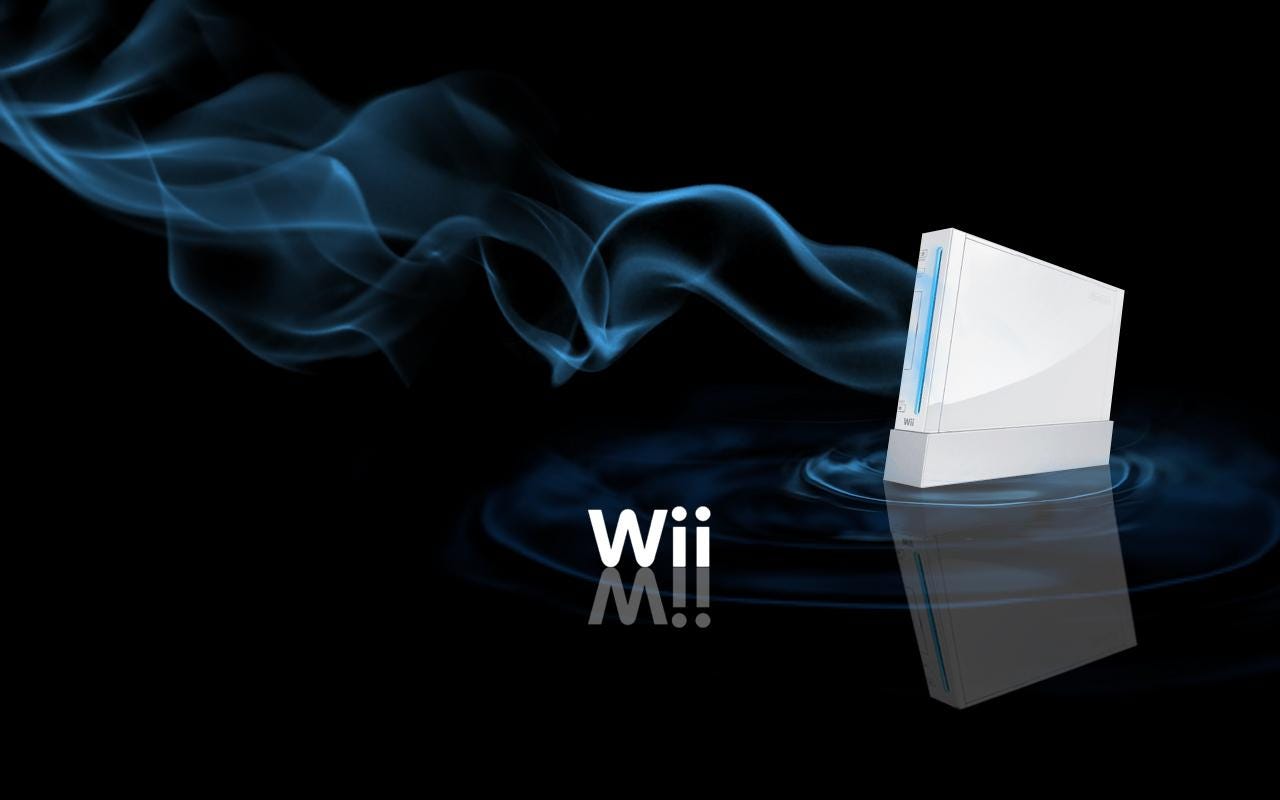
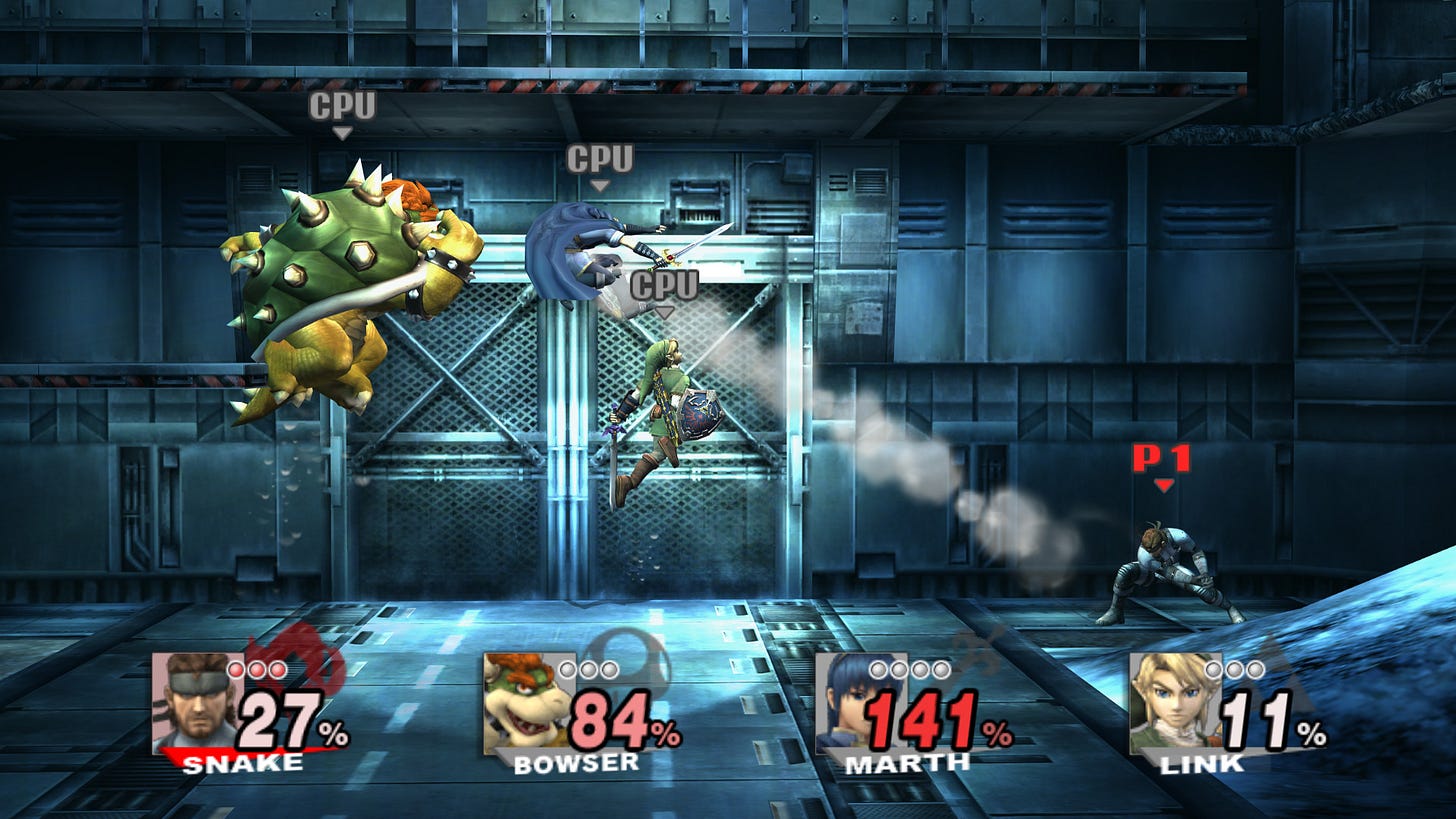
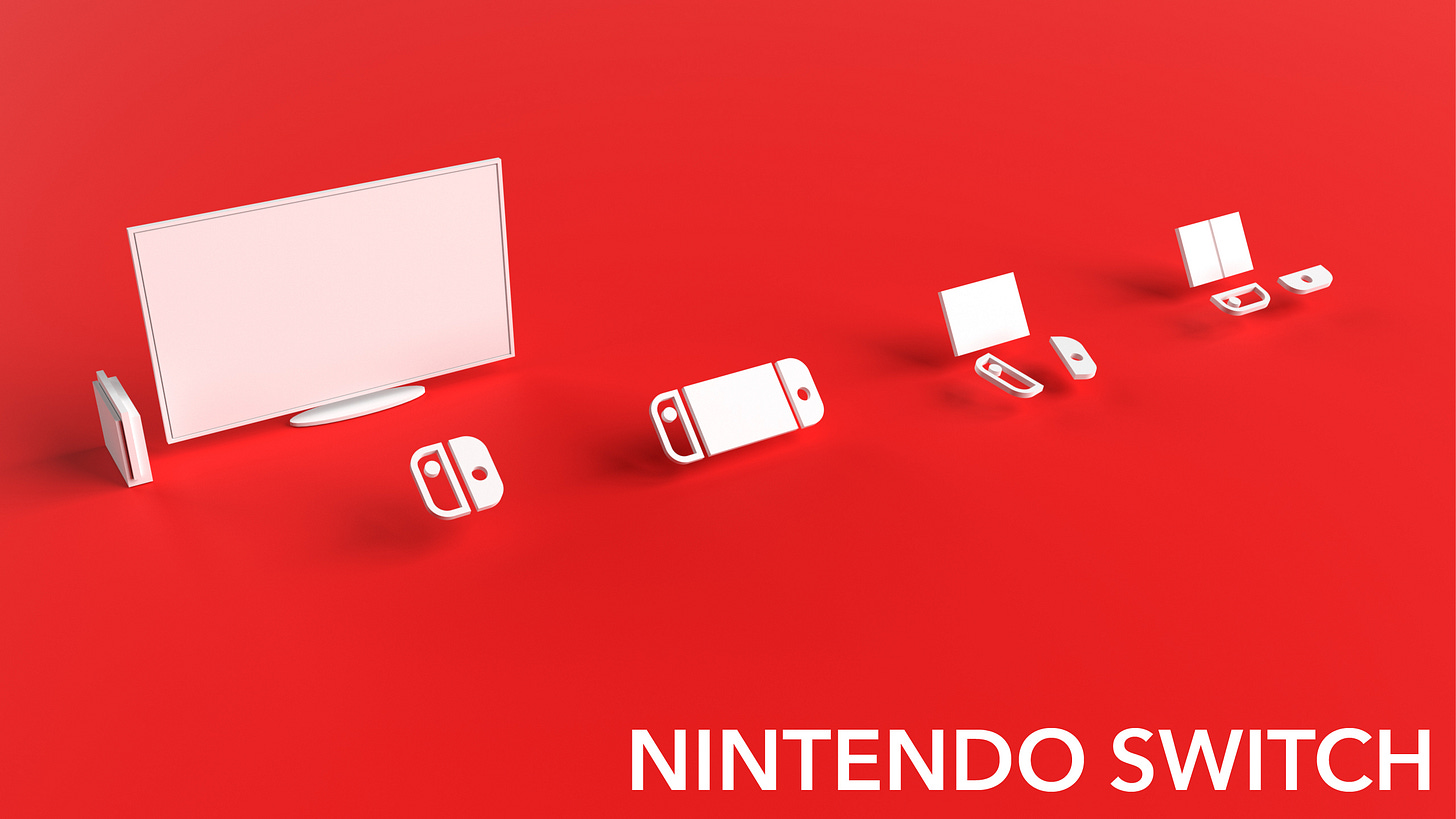

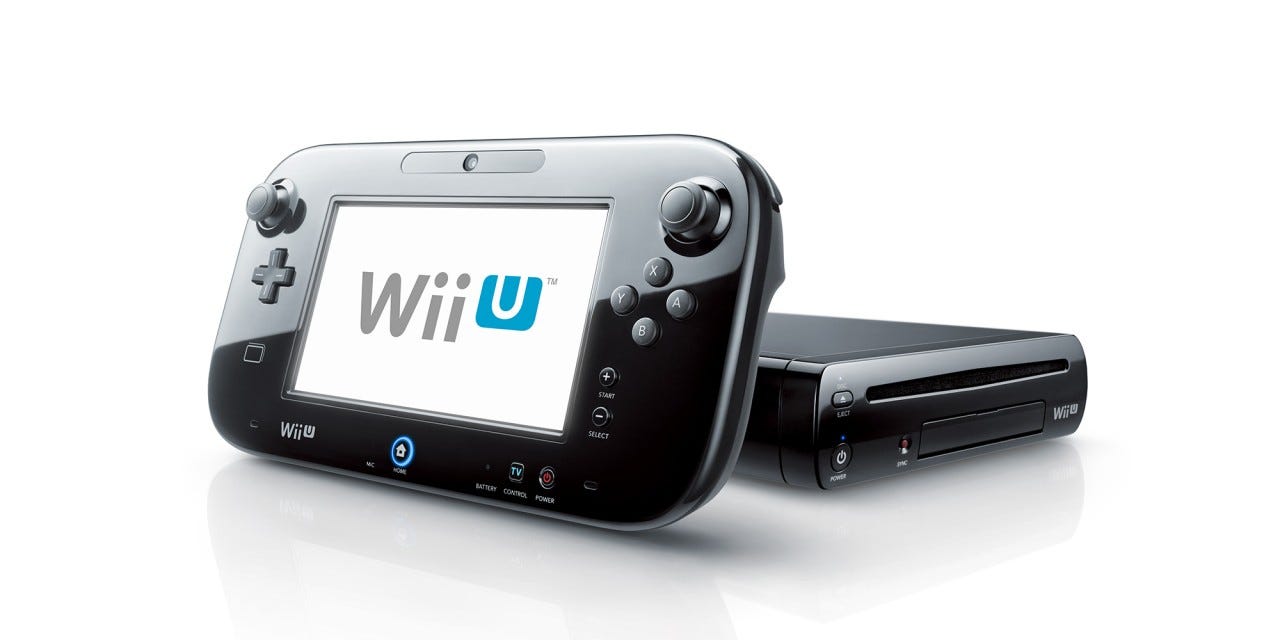
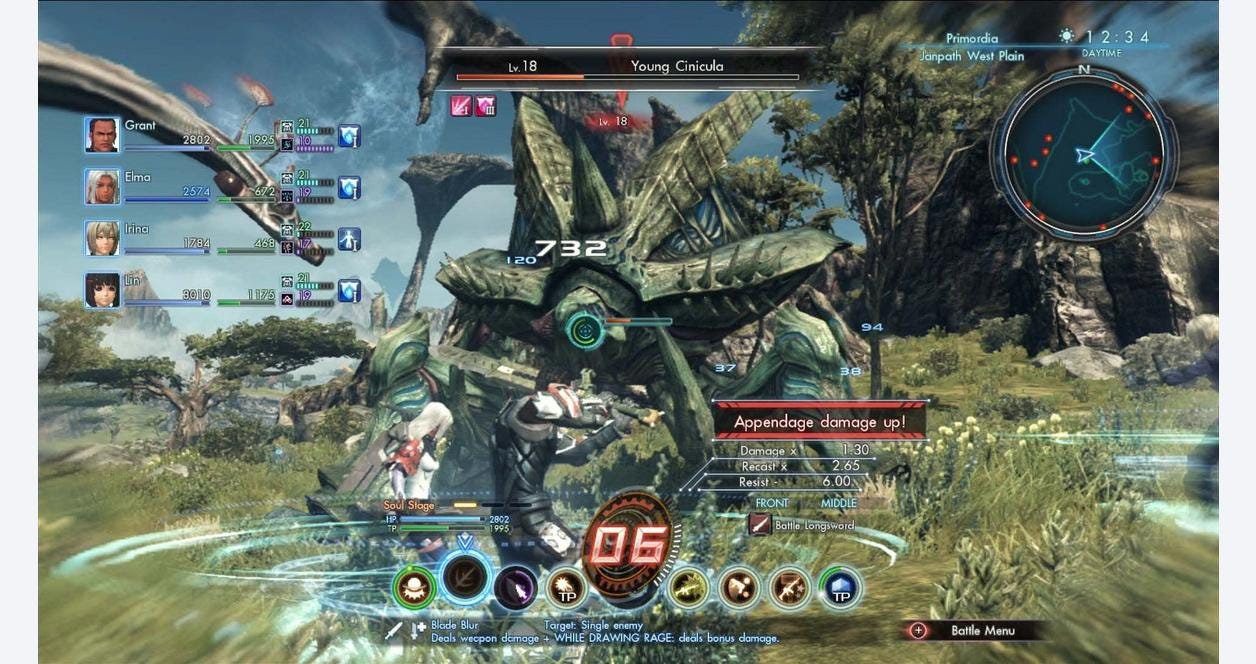
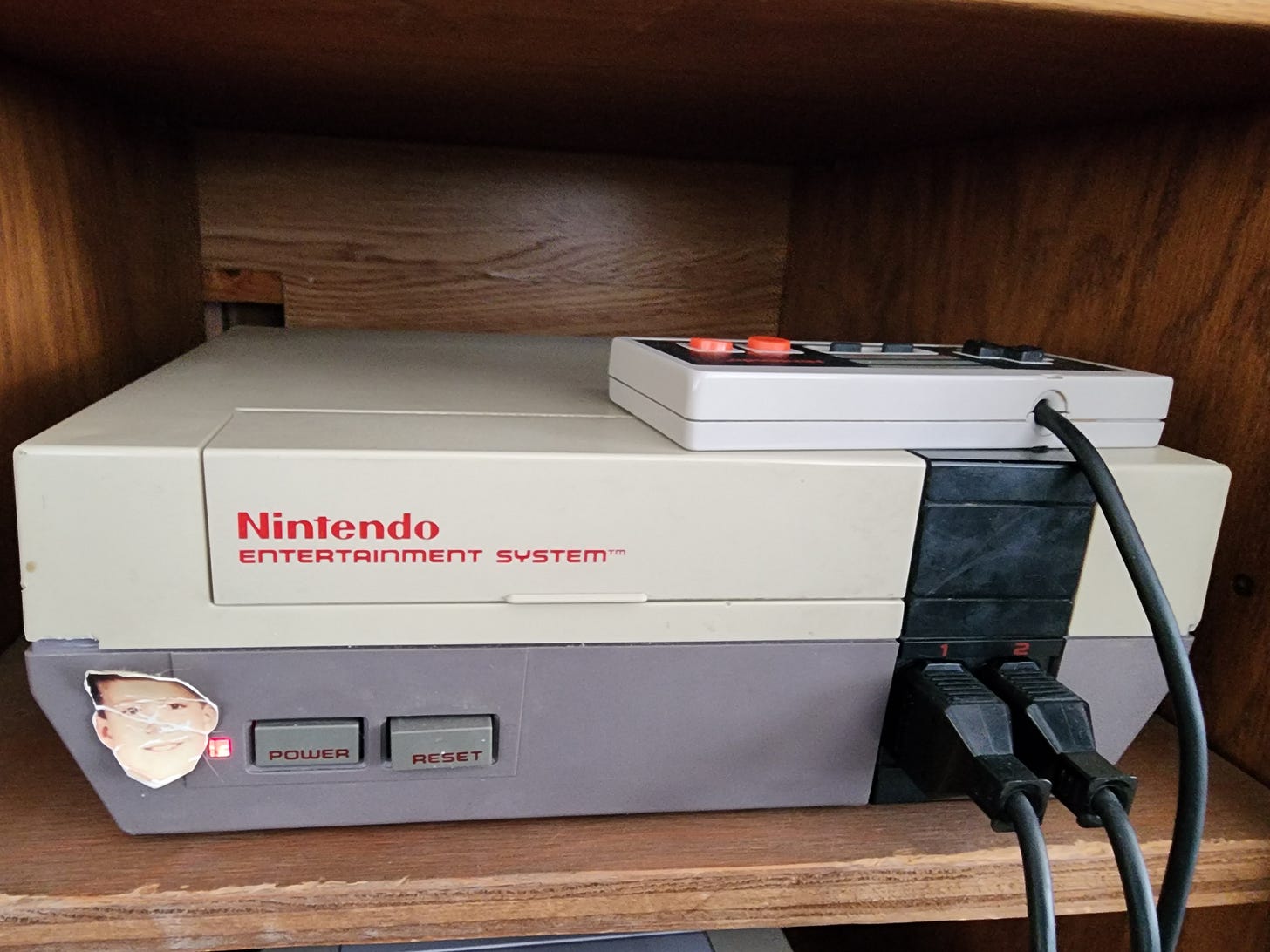
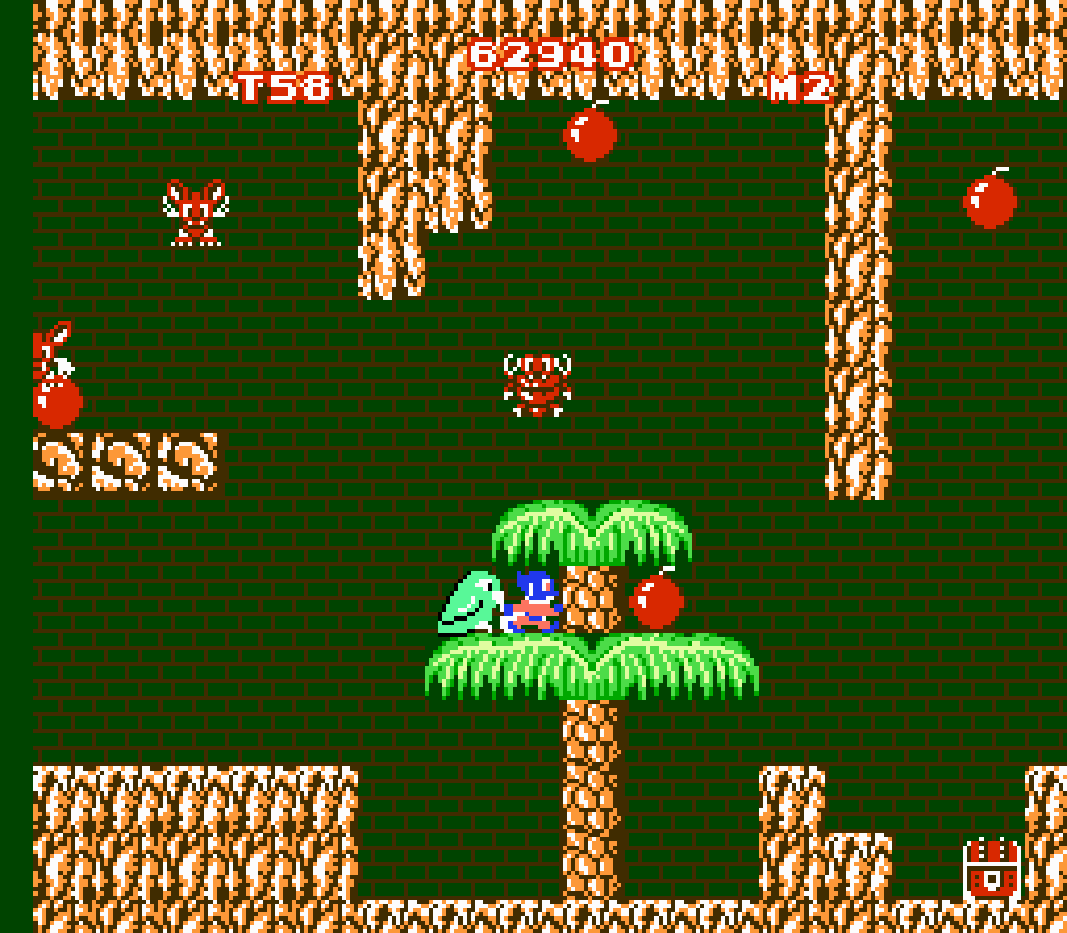

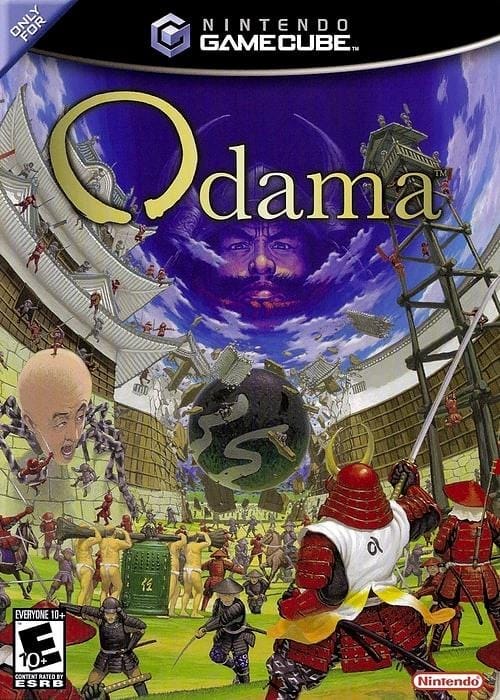

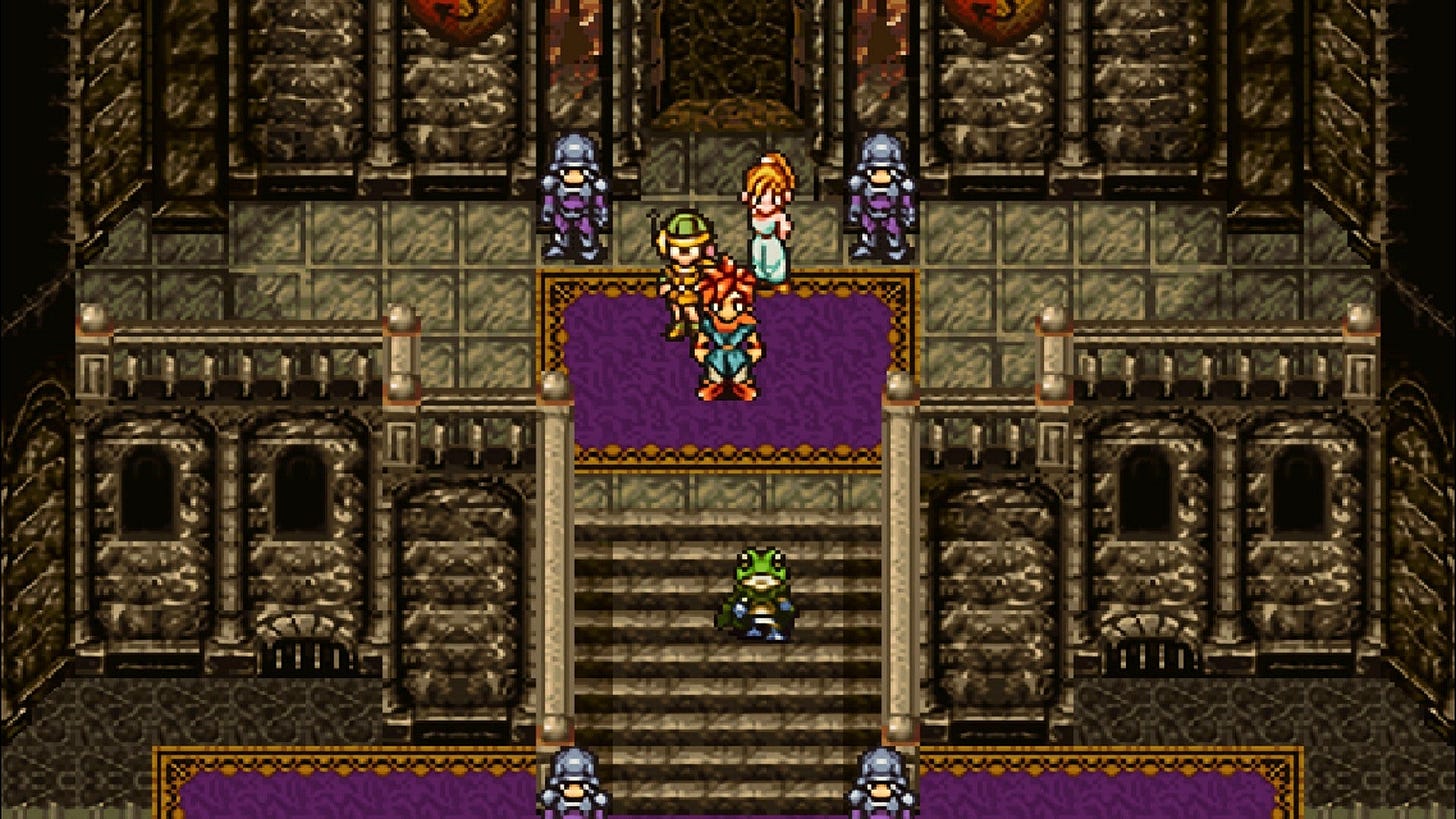
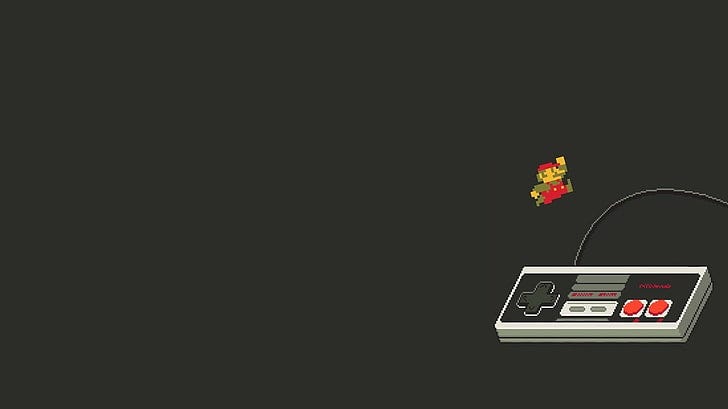
Man, it’s hard to overstate what a pile of broken promises the N64 felt like to 14-year-old me. When Mario 64 came out, it was like, “Wow, 3D is amazing! I guess every game will be this mind-blowing now!” and then it turned out that actually making a good 3D game was really, really hard. Oh well.
Shadowgate 64 was one of my favorite games ever, though
While the N64 will always enjoy a special part of my Millennial heart, I do recognize that its launch really was botched with few games available. Ocarina of Time and the frantic multiplayer of Goldeneye were pretty much the only games we played regularly. I agree that the SNES was the superior console and truly redefined what video games could be as a medium along with launching an entire host of IP.